Canadian dog brand Earth Rated has received a holistic overhaul from design agency Layer, which includes new canine-friendly branding and a range of toys designed for more “stimulating, long-lasting and enjoyable play”.
The extensive two-year project saw Layer, led by designer Benjamin Hubert, expand the brand’s product portfolio beyond commercially compostable poo bags to include a range of other dog-walks supply designed with sustainability in mind.
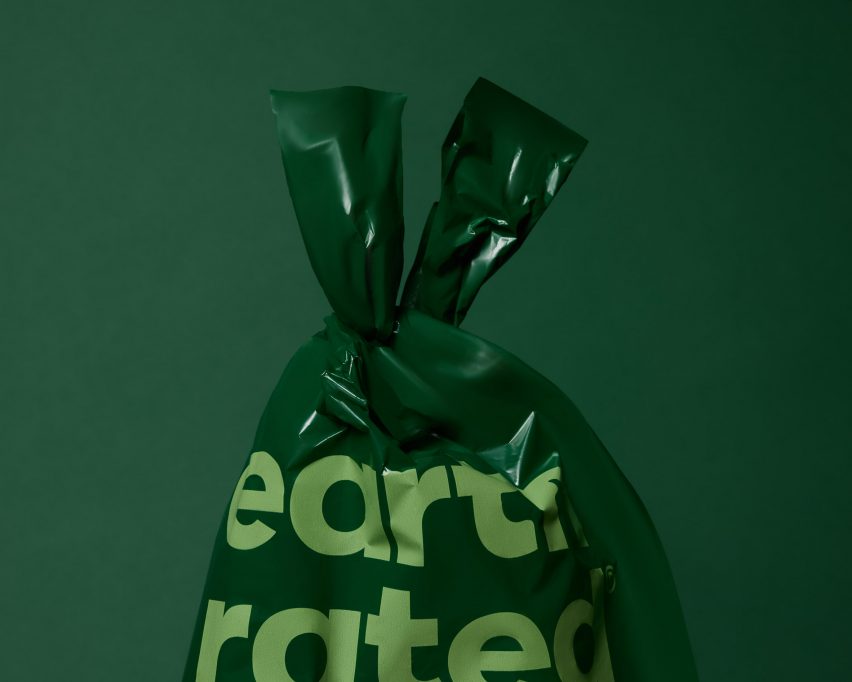

These include toys made from natural rubber and new poo bags made from 65 percent post-consumer recycled plastic, which the brand says will “give a second life to more than five million pounds of landfill-bound plastic every year”.
To match the toys, Earth Rated’s revised brand identity was designed to avoid many of the tropes associated with traditional pet products.
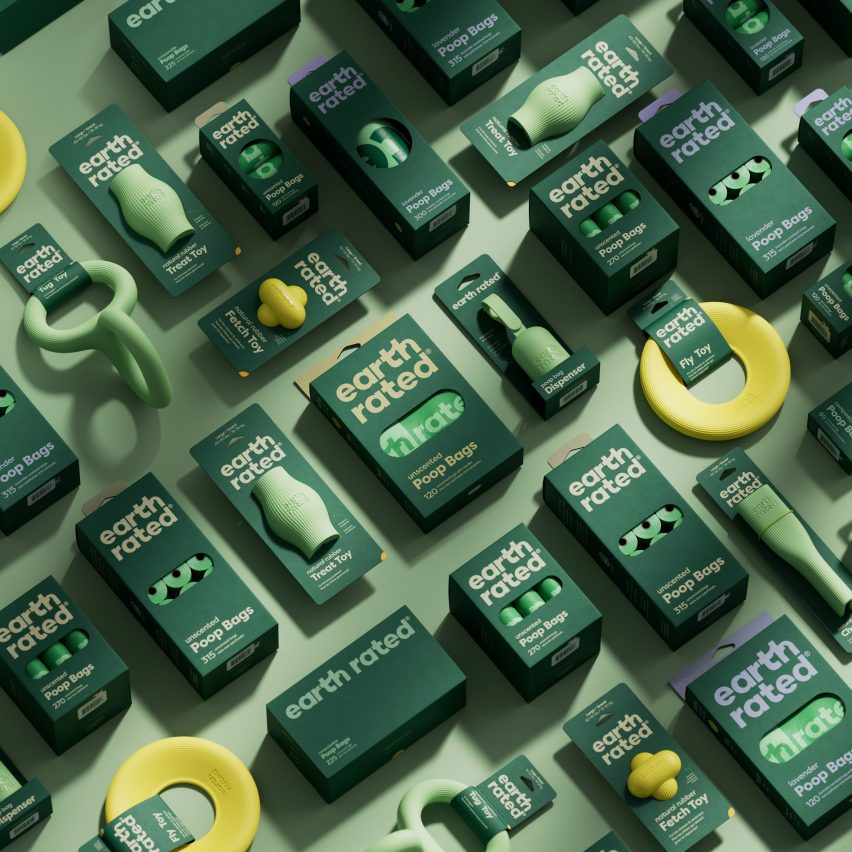

Instead, it balances restrained graphics with bold colors including pops of yellow – one of the few colors in the visible spectrum for dogs.
“The dog accessories and toy market is a crowded space,” Hubert told Dezeen. “There are many products available that are of mixed quality and often over-designed or overpowered.”
“We focus on creating simple products that achieve a better design standard, both more beautiful but more useful and ergonomically beneficial for both pet and human.”
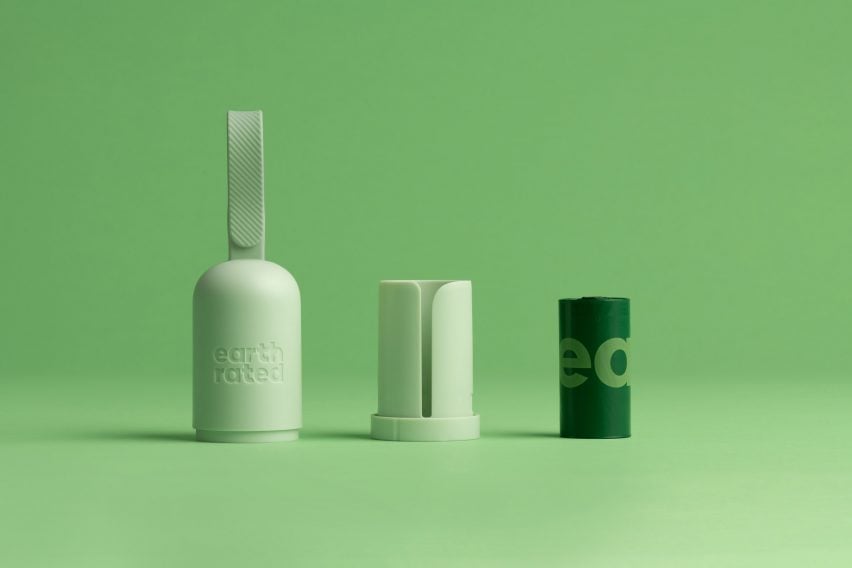

Moving away from the brand’s cartoonish canine mascot, the new Earth Rated brandmark is rendered in a simple sans serif font with the silhouette of the dog and its wagging tail incorporated into the negative spaces of the T and H.
Earth Rated originally launched in 2010 with their flagship poo bag made from polybutylene adipate terephthalate (PBAT) – a biodegradable fossil plastic that the company says can break down in an industrial composter in 45 days, provided it accepts the pet waste facility.
As this is rarely, if ever, the case in the UK and US, the company has teamed up with Layer to develop a new poo bag that will have a lower environmental impact while using less virgin plastic.
The newly launched trash bags are made primarily from recycled plastic waste, which Hubert says makes them less resource-intensive.
“Over the lifecycle of the bags, this new material option is more sustainable,” he explained. “They use less energy, and rely less on fossil fuels because they don’t create plastic from scratch.”
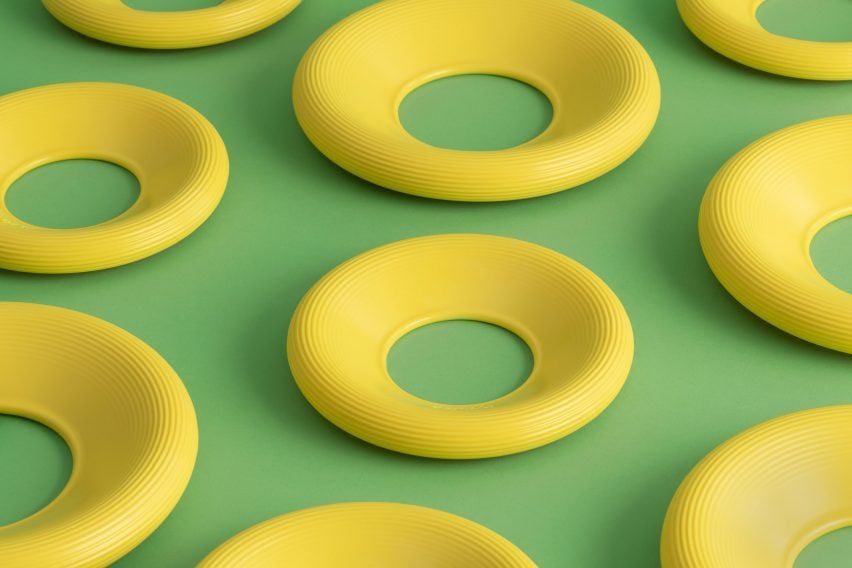

The bags come in a refillable dispenser with a detachable silicone strap, designed to enable easy disassembly and recycling when the product reaches the end of its life.
“The strap is made from silicone but is secured in a way that doesn’t use glues, over-moulds, screws or permanent fixtures,” says Hubert. “Both types of plastic are designed to be very easy to assemble in production and separate at the end of life.”
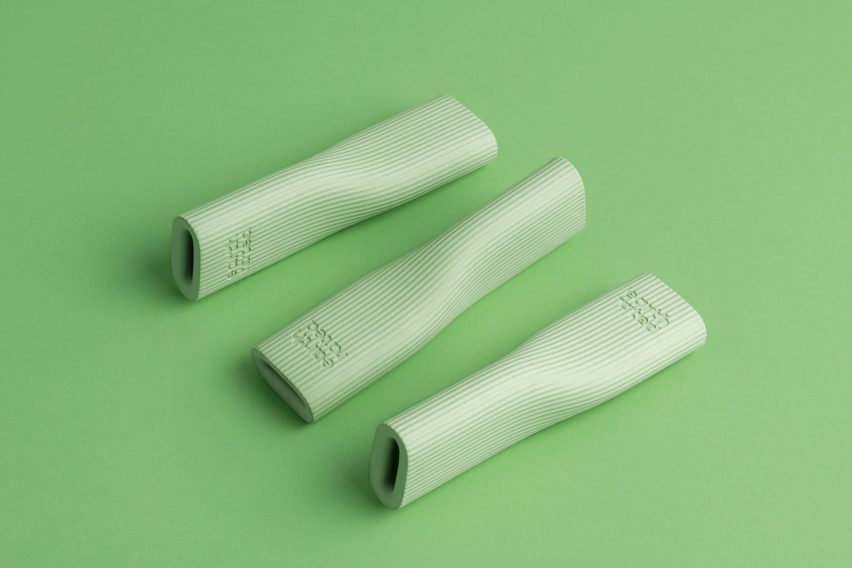

A similar philosophy is applied to five dog toys, all made with Program for the Endorsement of Forest Certification (PEFC)-certified natural rubber from Vietnam except for the frisbee, which is made from a recyclable thermoplastic elastomer (TPE). .
The toys themselves are designed to “subtly reimagine classic typologies” and include a chew toy with a twisted form designed to be held by the feet, and a ball made up of two intersecting forms to create unpredictable bounce pattern.
Both the finished ball and frisbee are yellow, so dogs can easily see, catch and find them in the grass.
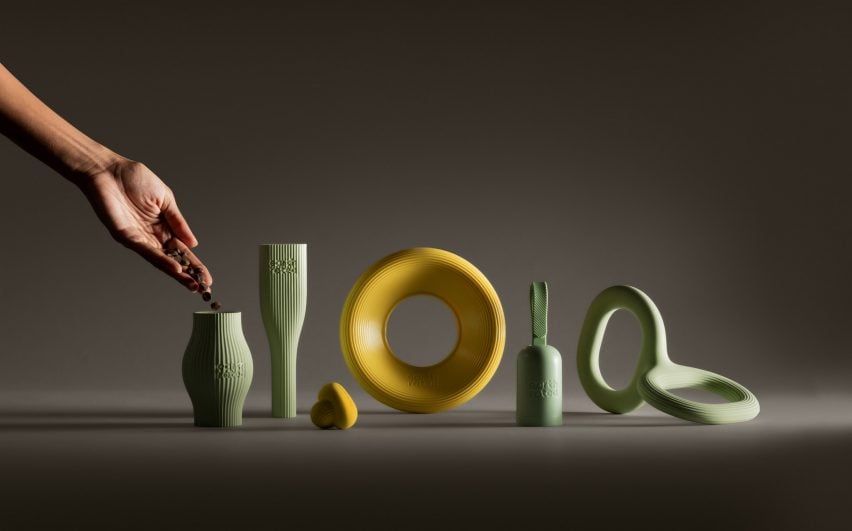

“The ergonomics of the dog and people were key through the project, as well as the design for more stimulating, long-lasting and enjoyable play for both parties,” said Hubert.
“We designed from the ground up using simple geometries, single materials and simple manufacturing processes. That kept costs at a low scale, but challenged us to think of ways to improve product archetypes without adding too complicated.”
Previously, Layer worked on branding and product design for wellness brand Never Go Alone and conceptual psychedelics subscription service Keia.


